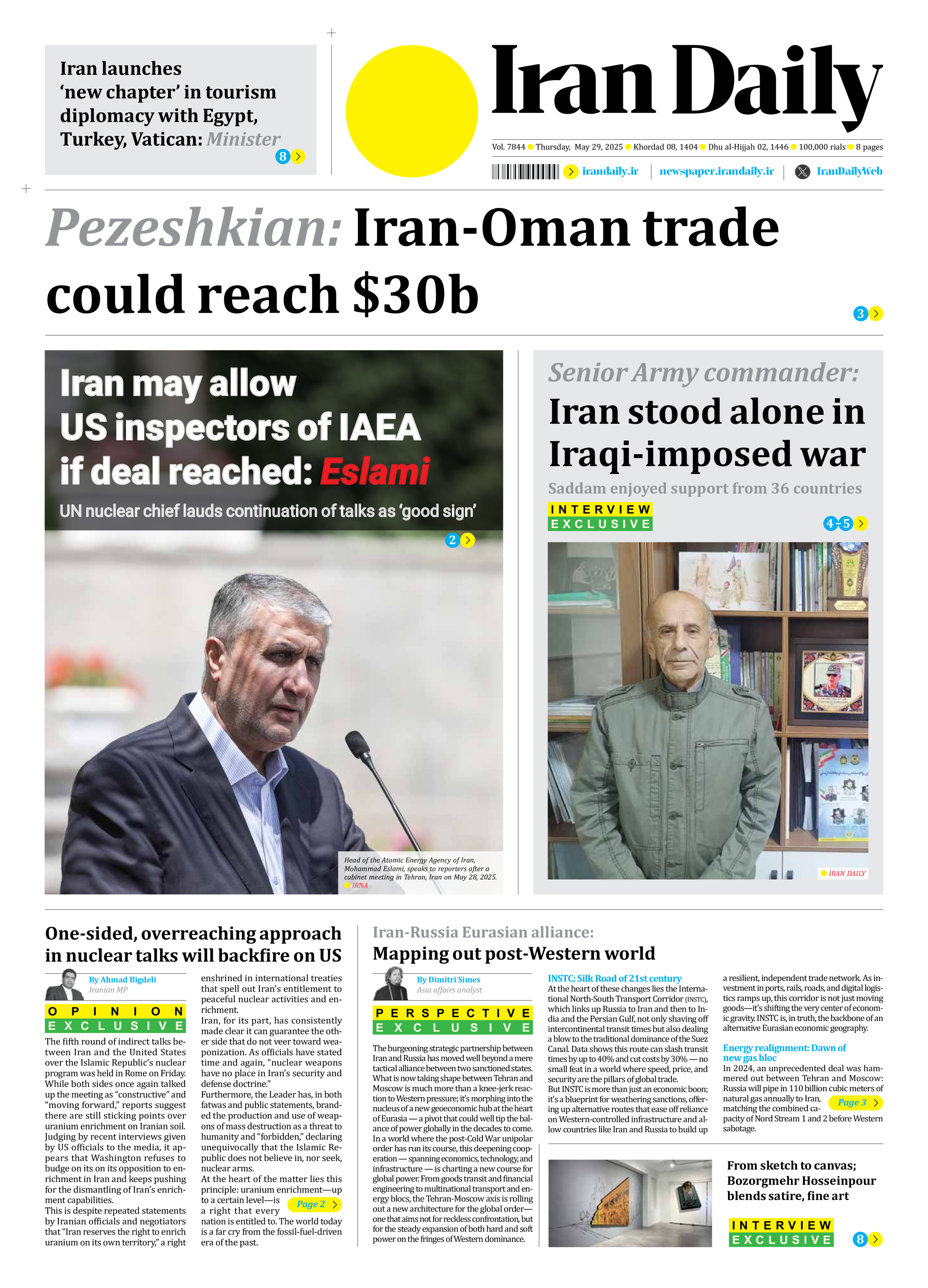
Iran-Russia Eurasian alliance:
Mapping out post-Western world
By Dimitri Simes
Asia affairs analyst
The burgeoning strategic partnership between Iran and Russia has moved well beyond a mere tactical alliance between two sanctioned states. What is now taking shape between Tehran and Moscow is much more than a knee-jerk reaction to Western pressure; it’s morphing into the nucleus of a new geoeconomic hub at the heart of Eurasia — a pivot that could well tip the balance of power globally in the decades to come. In a world where the post-Cold War unipolar order has run its course, this deepening cooperation — spanning economics, technology, and infrastructure — is charting a new course for global power. From goods transit and financial engineering to multinational transport and energy blocs, the Tehran-Moscow axis is rolling out a new architecture for the global order—one that aims not for reckless confrontation, but for the steady expansion of both hard and soft power on the fringes of Western dominance.
INSTC: Silk Road of 21st century
At the heart of these changes lies the International North-South Transport Corridor (INSTC), which links up Russia to Iran and then to India and the Persian Gulf, not only shaving off intercontinental transit times but also dealing a blow to the traditional dominance of the Suez Canal. Data shows this route can slash transit times by up to 40% and cut costs by 30% — no small feat in a world where speed, price, and security are the pillars of global trade.
But INSTC is more than just an economic boon; it’s a blueprint for weathering sanctions, offering up alternative routes that ease off reliance on Western-controlled infrastructure and allow countries like Iran and Russia to build up a resilient, independent trade network. As investment in ports, rails, roads, and digital logistics ramps up, this corridor is not just moving goods—it’s shifting the very center of economic gravity. INSTC is, in truth, the backbone of an alternative Eurasian economic geography.
Energy realignment: Dawn of
new gas bloc
In 2024, an unprecedented deal was hammered out between Tehran and Moscow: Russia will pipe in 110 billion cubic meters of natural gas annually to Iran, matching the combined capacity of Nord Stream 1 and 2 before Western sabotage.
Page 3







